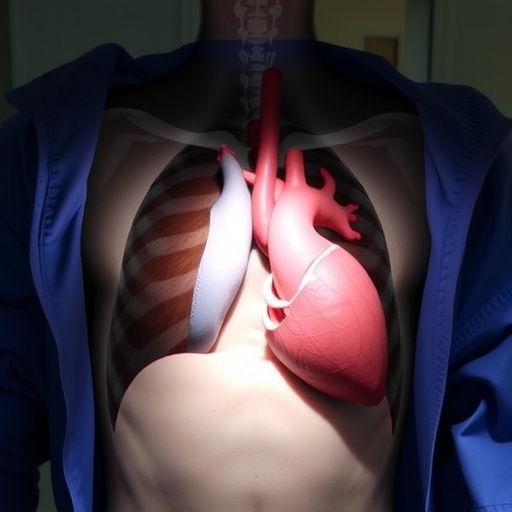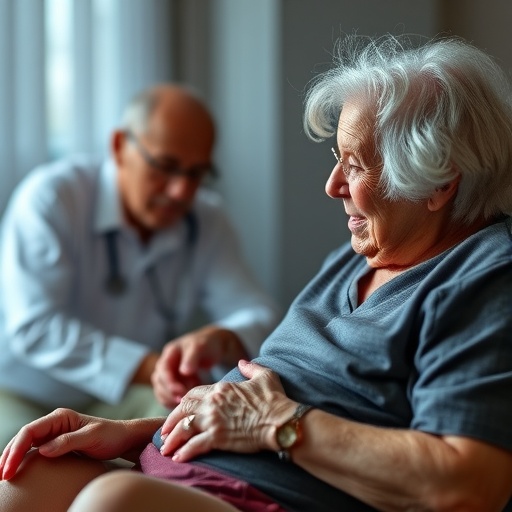Charlottesville, VA (June 20, 2019) Fibrosis is often associated with many of the fatal diseases that pervade our globe, riddling organs with stiff tissue that diminishes their flexibility and leads to their failure. The World Health Organization estimates that fibrosis is directly implicated in, or responsible for, as many as 40 percent of all deaths across the globe. The University of Virginia School of Engineering, in conjunction with the UVA School of Medicine, launched a dedicated Fibrosis Initiative to address this increasingly prevalent threat, drawing from university-wide expertise in extracellular, computational, and quantitative biology.
“In many ways, fibrosis is as significant a problem as cancer, but we have no reliable approaches for early detection or effective treatment,” said Thomas Barker, professor of biomedical engineering at UVA Engineering and director at the Fibrosis Initiative.
“Through this initiative, we can leverage the collective expertise of UVA researchers that are conducting fibrosis related studies to establish those groundbreaking approaches.”
UVA is taking a significant step forward in shaping those groundbreaking approaches, hosting a first-of-its kind, dedicated forum on fibroblasts from June 23-35. The American Society for Matrix Biology will co-host the event.
To date, the biomedical field has not firmly established a definition for fibroblasts, often viewing them as a single, catch-all cell type. However, this international meeting aims to help shape this definition–and shed light on the impact fibroblasts have on the formation of scar tissue, proper repair of wounds, and modeling of complex systems.
The meeting, sponsored by Bristol Meyers Squibb, the National Institutes of Health, UVA Fibrosis Initiative and the University of Nebraska Medical Center, will convene more than 100 world leaders and investigators who have contributed to this area of work. Sessions, led by moderators from across the country, will focus on a variety of topics relating to fibroblasts, including their origins and lineages; pathology; imaging; and role in shaping signaling networks.
Over the course of three days, speakers will also share insights from both published and unpublished cutting-edge studies. Jeffrey Holmes, professor of biomedical engineering and medicine and director of the Center for Engineering in Medicine at the University of Virginia, as well as Boris Hinz, distinguished professor of tissue repair and regeneration at the University of Toronto, will deliver keynote addresses.
As the Fibrosis Initiative continues to promote national and international collaborations around fibroblasts, it will also focus on supporting related research at UVA, launching an initial cohort of multi-investigator “seed grants” in the interest of securing a National Institutes of Health “Center of Excellence” designation. Post-doctoral fellows will have the opportunity to shape the next wave of research on fibroblasts, and fibrosis more generally, with these funding supports.
Current projects include:
Stemming the Tide of Lung Transplant Rejections: While lung transplants have transformed the prospects of patients with end-stage lung failure, the overall five- to 10-year survival rate still lags significantly behind patients with other types of organ transplants such as livers and kidneys; the result of a condition known as chronic lung allograft dysfunction (CLAD). With the support of Barker and Dr. Alexander Krupnick, a thoracic and cardiovascular surgeon at UVA Health System, initial research has shown how the loss of expression of Thy-1, an important glycoprotein that defines unique subtypes of fibroblasts, may increase the likelihood of CLAD during lung transplants.
Positioning Cancer-Associated Fibroblasts to Combat Tumor Growth: While cancer-associated fibroblasts (CAFs), which are prominent in the tumor stroma, can inhibit the progress of tumors, others can also curtail the impact of critical therapies and drugs. The principal investigator, Andrew Dudley, associate professor of microbiology, immunology and cancer biology at the UVA School of Medicine, is leveraging a seed grant to develop cutting-edge tools and approaches that identify the different molecular compositions of CAFs; explore how blocking damaging CAFs could delay the progress of tumors; and inform strategies that improve how we treat cancer.
Biomedical engineers, scientists, and clinicians across UVA will continue to come together to lead similar projects, all of which strive to identify the causes of pathological cell behaviors, explore how fibrosis affects the well-being of specific organ systems, and pinpoint new techniques to detect, monitor, and treat this condition.
Over the next several years, the Fibrosis Initiative also aims to launch additional, dedicated meetings and research opportunities (both internally and nationally) around fibroblasts, maintaining the momentum from this convening and related projects.
“Through the upcoming ASMB meeting and our own groundbreaking seed grant projects, we have the opportunity to lead an increasingly imperative global conversation on fibroblasts and fibrosis more generally,” said Barker.
“If we are successful, we can make significant strides in the worldwide fight to diagnose and treat a growing cause of death that affects all communities.”
###
See here for more information about the Fibrosis Initiative. For additional details about next week’s meeting on fibroblasts, please visit this link.
About the University of Virginia Fibrosis Initiative
The Fibrosis Initiative represents a grassroots project, supported at the highest levels of the University, that mobilizes, and builds connections among the critical mass of UVA researchers conducting fibrosis-related studies, leading to potentially groundbreaking, cross-disciplinary investigations. The Fibrosis Initiative is facilitating multi-investigator R01 awards, Bioengineering Research Grants, and Bioengineering Research Partnerships, with the ultimate aim of securing an NIH Center of Excellence designation.
About UVA Engineering
As part of the top-ranked, comprehensive University of Virginia, UVA Engineering is one of the nation’s oldest and most respected engineering schools. Our mission is to make the world a better place by creating and disseminating knowledge and by preparing future engineering leaders. Outstanding students and faculty from around the world choose UVA Engineering because of our growing and internationally recognized education and research programs. UVA is the No. 1 public engineering school in the country for the percentage of women graduates, among schools with at least 75 degree earners; the No. 1 public engineering school in the United States for the four-year graduation rate of undergraduate students; and the top engineering school in the country for the rate of Ph.D. enrollment growth. Learn more at engineering.virginia.edu.
Media Contact
Elizabeth Thiel Mather
[email protected]
https:/




